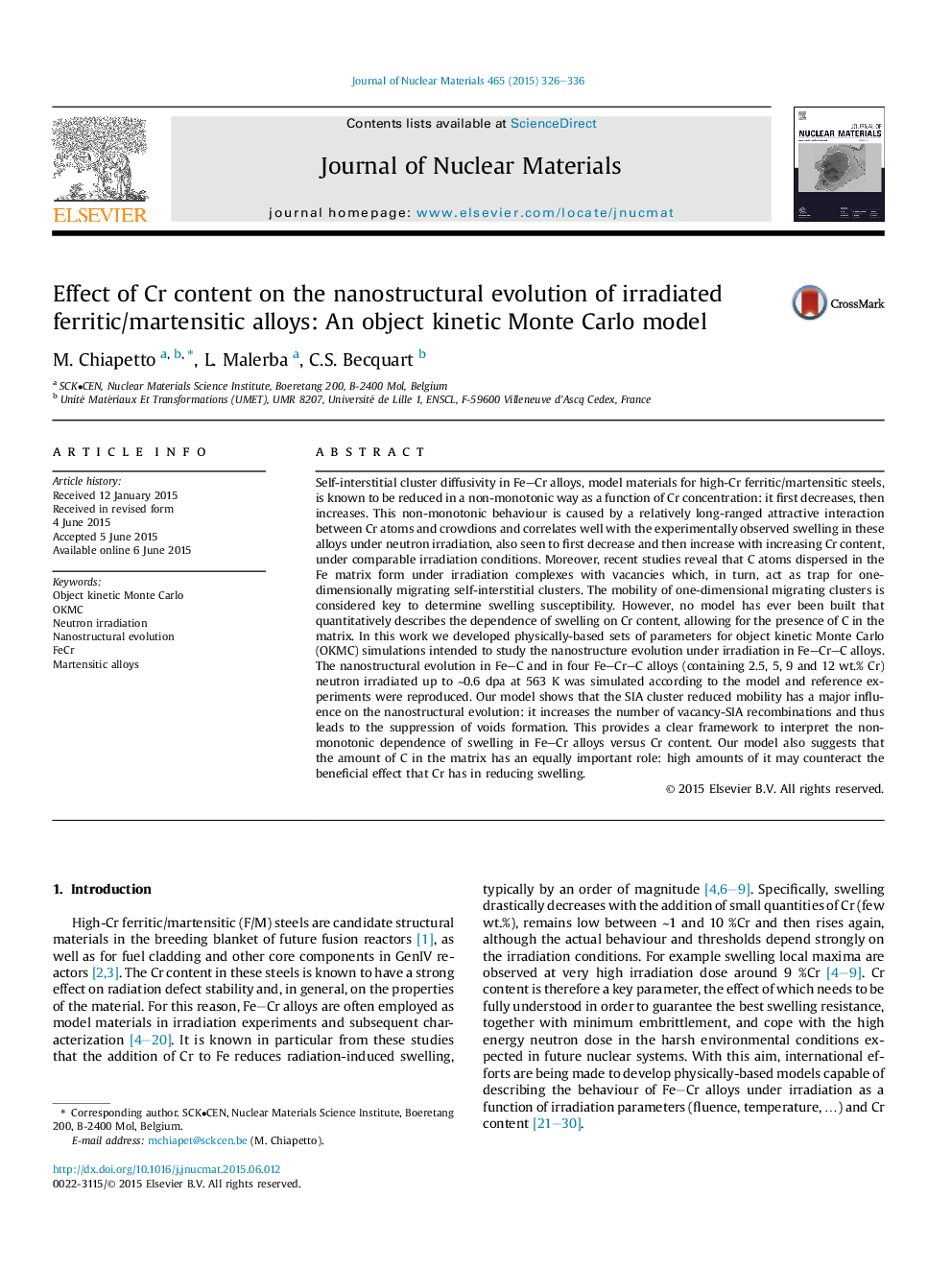| کد مقاله | کد نشریه | سال انتشار | مقاله انگلیسی | نسخه تمام متن |
|---|---|---|---|---|
| 7965300 | 1514180 | 2015 | 11 صفحه PDF | دانلود رایگان |
عنوان انگلیسی مقاله ISI
Effect of Cr content on the nanostructural evolution of irradiated ferritic/martensitic alloys: An object kinetic Monte Carlo model
ترجمه فارسی عنوان
اثر محتوای کروم بر تکامل نانوساختار آلیاژهای فروتینی / مارنزیتی پرتوزا: یک مدل سینتیک مونت کارلو
دانلود مقاله + سفارش ترجمه
دانلود مقاله ISI انگلیسی
رایگان برای ایرانیان
موضوعات مرتبط
مهندسی و علوم پایه
مهندسی انرژی
انرژی هسته ای و مهندسی
چکیده انگلیسی
Self-interstitial cluster diffusivity in Fe-Cr alloys, model materials for high-Cr ferritic/martensitic steels, is known to be reduced in a non-monotonic way as a function of Cr concentration: it first decreases, then increases. This non-monotonic behaviour is caused by a relatively long-ranged attractive interaction between Cr atoms and crowdions and correlates well with the experimentally observed swelling in these alloys under neutron irradiation, also seen to first decrease and then increase with increasing Cr content, under comparable irradiation conditions. Moreover, recent studies reveal that C atoms dispersed in the Fe matrix form under irradiation complexes with vacancies which, in turn, act as trap for one-dimensionally migrating self-interstitial clusters. The mobility of one-dimensional migrating clusters is considered key to determine swelling susceptibility. However, no model has ever been built that quantitatively describes the dependence of swelling on Cr content, allowing for the presence of C in the matrix. In this work we developed physically-based sets of parameters for object kinetic Monte Carlo (OKMC) simulations intended to study the nanostructure evolution under irradiation in Fe-Cr-C alloys. The nanostructural evolution in Fe-C and in four Fe-Cr-C alloys (containing 2.5, 5, 9 and 12Â wt.% Cr) neutron irradiated up to â¼0.6 dpa at 563Â K was simulated according to the model and reference experiments were reproduced. Our model shows that the SIA cluster reduced mobility has a major influence on the nanostructural evolution: it increases the number of vacancy-SIA recombinations and thus leads to the suppression of voids formation. This provides a clear framework to interpret the non-monotonic dependence of swelling in Fe-Cr alloys versus Cr content. Our model also suggests that the amount of C in the matrix has an equally important role: high amounts of it may counteract the beneficial effect that Cr has in reducing swelling.
ناشر
Database: Elsevier - ScienceDirect (ساینس دایرکت)
Journal: Journal of Nuclear Materials - Volume 465, October 2015, Pages 326-336
Journal: Journal of Nuclear Materials - Volume 465, October 2015, Pages 326-336
نویسندگان
M. Chiapetto, L. Malerba, C.S. Becquart,
